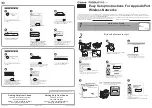
System Configuration
6-50
6
Radio Interface
The IEEE 802.11a and 802.11g interfaces include configuration options for radio
signal characteristics and wireless security features. The configuration options are
nearly identical, and are therefore both covered in this section of the manual.
The access point can operate in three modes, IEEE 802.11a only, 802.11b/g only, or
a mixed 802.11a/b/g mode. Also note that 802.11g is backward compatible with
802.11b. These interfaces are configured independently under the following web
pages:
• Radio Interface A: 802.11a
• Radio Interface G: 802.11b/g
Each radio supports up to four virtual access point (VAP) interfaces numbered 0 to
3. Each VAP functions as a separate access point, and can be configured with its
own Service Set Identification (SSID) and security settings. However, most radio
signal parameters apply to all four VAP interfaces.
The VAPs function similar to a VLAN, with each VAP mapped to its own VLAN ID.
Traffic to specific VAPs can be segregated based on user groups or application
traffic. Each VAP can have up to 64 wireless clients, whereby the clients associate
with these VAPs the same as they would with a physical access point.
Note:
The radio channel settings for the access point are limited by local regulations,
which determine the number of channels that are available. Refer to “General
Specifications” on page C-1 for additional information on the maximum number
channels available.
















































